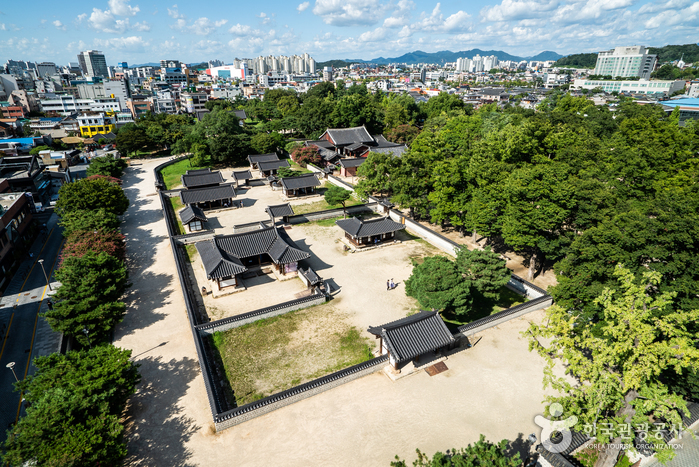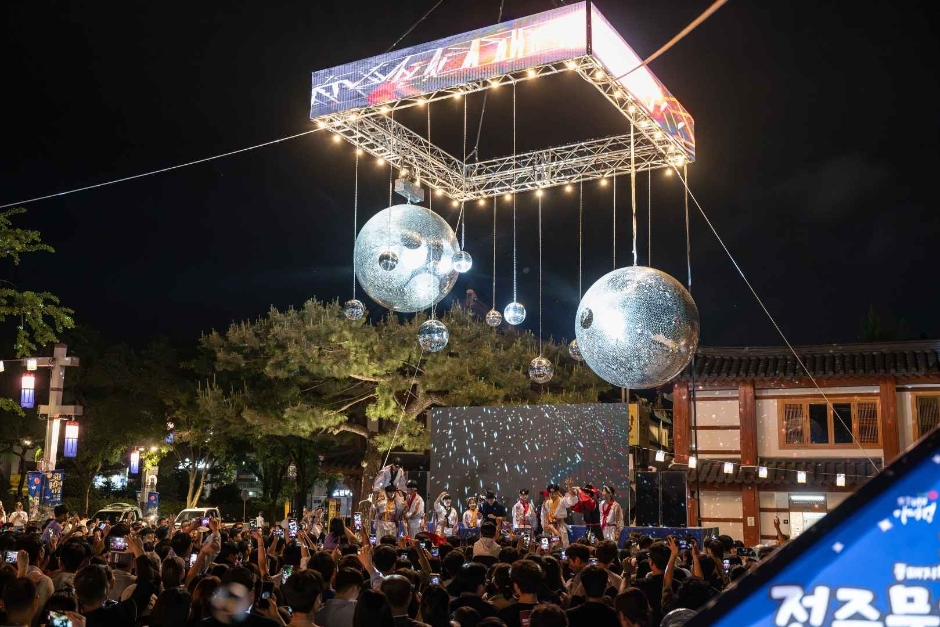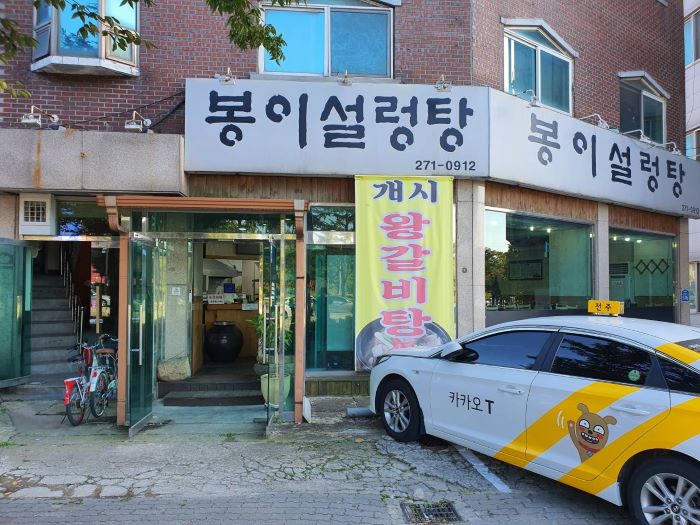Gongjakbuini Gongjakhan Gongjak [Tax Refund Shop] (공작부인이공작한공작)
3.5 Km 0 2024-04-19
20, Hyeonmu 1-gil, Wansan-gu, Jeonju-si, Jeollabuk-do
-
Jeonju Hanji Culture Festival (전주 한지문화축제)
3.5 Km 16843 2024-04-07
20, Hyeonmu 1-gil, Wansan-gu, Jeonju-si, Jeonbuk-do
• 1330 Travel Hotline: +82-2-1330 (Korean, English, Japanese, Chinese) • For more info: +82-63-271-2503
Jeonju Hanji Culture Festival was organized to promote the excellent qualities of hanji (traditional mulberry paper), and the artistic use of it. The festival also aims to become a global festival promoting Korean style to the world.
Jeonju Jeondong Catholic Cathedral (전주전동성당)
3.5 Km 52001 2024-05-27
51 Taejo-ro, Wansan-gu, Jeonju-si, Jeonbuk-do
Jeondong Catholic Cathedral in Jeonju was built in honor of Roman Catholic martyrs of the Joseon dynasty on the very same spot the martyrs lost their lives. The land was purchased by French Priest Baudenet in 1891 (28th year of King Gojong), but construction of the church did not begin until 1908. Construction was completed in 1914, a time during which Korea was under Japanese rule. Though originally built just outside of Pungnammun Gate, the site of the martyrs, the church was later moved to its current location for expansion.
The first Romanesque building in the Honam region, Jeondong Catholic Cathedral is made of gray and red bricks and bears a striking resemblance to the Myeongdong Cathedral in Seoul, also designed by Priest Poinel. Not only considered one of the most beautiful Catholic churches in Korea, some even go so far as to say it is one of the most beautiful structures in all of Korea, citing the church’s unique combination of Byzantine and Romanesque architectural styles. The rectangular building is topped with three Byzantine bell towers (to the right, center, and left) and boasts arched ceilings, several of which meet in the form of a cross.
It is interesting to note that some of the bricks used in construction of the church were made using materials from the Jeonjueupseong Walled Town, which was torn down by the Japanese. It is also said that the cornerstone of the church came from a wall of Jeonjueupseong Walled Town near Pungnammun Gate.
Olive Young - Jeonju Hyoja Branch [Tax Refund Shop] (올리브영 전주서부효자)
3.5 Km 0 2024-04-22
11, Baubaegi 2-gil, Wansan-gu, Jeonju-si, Jeollabuk-do
-
Olive Young - Jeonju Pyeonghwa Branch [Tax Refund Shop] (올리브영 전주평화점)
3.5 Km 0 2024-06-27
#106, 4680, Moak-ro, Wansan-gu, Jeonju-si, Jeonbuk-do
-
Royal Portrait Museum (어진박물관)
3.5 Km 19472 2024-04-07
44, Taejo-ro, Wansan-gu, Jeonju-si, Jeonbuk-do
+82- 63-231-0090
Opened on November 6, 2010, the Royal Portrait Museum is one of the newest attractions of Jeonju, located within the Gyeonggijeon Shrine. Royal Portrait Museum is a valuable museum as a new tourism resource of Jeonju as well as Gyeonggijeon Shrine and the Portrait of King Taejo, as well as other various high-class exhibitions to preserve, manage, and enhance the glorious cultural assets of Joseon royal family. The museum is comprised of one above-ground level and one underground level with an area of 1,193.71 square meters. The Portrait of King Taejo and six other king’s portraits (Portrait of King Sejong, King Yeongjo, King Jeongjo, King Cheoljong, King Gojong, and King Sunjong) are exhibited on the first floor. The portraits are preserved in temperature- and humidity-controlled cases. In addition, the museum houses History Hall, Palanquin Hall, a planned exhibition hall, resting area, management office and storage room for relics. Palanquin Hall exhibits Hyangjeong (Palanquin for Incense Burner and Case), Sinyeon (Palanquin for Royal Portrait and Palanquin for Mortuary Tablet), Chaeyeo (Palanquin for High Officials), Gagyo (Palanquin for Ritual Items) featuring Korea’s sole preserved palanquin. History Hall houses approximately 80 relices related to Gyeonggijeon Shrine and Jogyeong Shrine, ancestral ritual ceremony, building, and others relics. Since the museum's opening, it makes continual efforts to become a central place for Jeonju residents to fulfill their cultural feelings. The museum operates various program like exploring famous historic sites in Gyeonggijeon Shrine, hands-on programs such as a guard experience to protect the shrine, and duplicating Gyeonggijeon Shrine’s relics using traditional portrait-making techniques.
Fine day [Korea Quality] / 좋은날 [한국관광 품질인증]
3.5 Km 7982 2024-04-07
37-7 , Jeondongseongdang-gil, Wansan-gu, Jeonju-si, Jeonbuk-do
+82-10-2607-3326
A Fine Day is a hanok stay on Jeondong Cathedral Street, Jeonju, Jeollabuk-do, which combines hanok tradition with modern convenience. The wood floor and red clay-lined walls and ceilings are a pleasure to wake up to. The rooms are well heated and have toilets, shower booths and bidets. From the wooden porch guests can enjoy a beautiful sunny garden planted with wildflowers and trees. Nearby attractions include Gyeonggijeon, Omokdae, Jeondong Cathedral and Nambu Market (great for food!).
Gyeonggijeon Shrine (경기전)
3.5 Km 55856 2024-05-27
44 Taejo-ro, Wansan-gu, Jeonju-si, Jeonbuk-do
+82-63-281-2790
A registered Historic Site, Gyeonggijeon Shrine was erected in 1410 and holds the portrait of King Tae-jo, the founder of the Joseon dynasty. The shrine was originally given the name Eoyongjeon, but was changed to its current name in 1442, the 24th year of King Sejong the Great. The structure was partially destroyed during the Imjin War (1592-1598), and was restored in 1614.
Jeonju Cultural Heritage Night Tour (전주문화유산야행, 다 같이 전주마블!)
3.6 Km 11471 2024-04-18
44 Taejo-ro, Wansan-gu, Jeonju-si, Jeonbuk-do
+82-63-232-9937
Jeonju Cultural Heritage Night Tour focuses on preserving and remembering Korea’s heritages and the ancestors’ spirits. Jeonju features many historical sites from the Joseon dynasty and traditional culture.
Bongi Seolleongtang (봉이설렁탕)
3.6 Km 72 2024-04-07
576, Baekje-daero, Deokjin-gu, Jeonju-si, Jeonbuk-do
+82-63-271-0912
Seolleongtang (ox bone soup) is Korea's representative health food rich in protein. The best menu at this restaurant is ox bone soup. This Korean dishes restaurant is located in Jeonju-si, Jeollabuk-do.



![Fine day [Korea Quality] / 좋은날 [한국관광 품질인증]](http://tong.visitkorea.or.kr/cms/resource/89/2597389_image2_1.jpg)



 English
English
 한국어
한국어 日本語
日本語 中文(简体)
中文(简体) Deutsch
Deutsch Français
Français Español
Español Русский
Русский